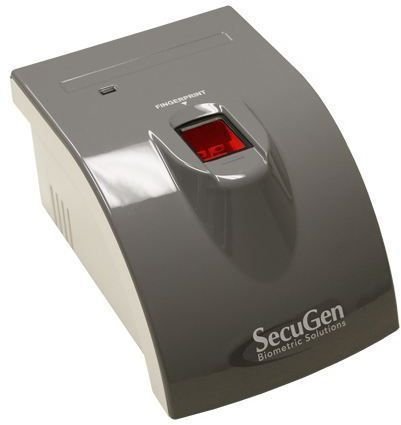Computer Security Fingerprint Devices & Retina Scan Pros and Cons
Data Collection – Advantage or Disadvantage?
Someone who loses a particular item of entry (such as a password or swipe card) will not gain access by standard means. This is why retinal and fingerprint scanners have been introduced; although their use adds further costs to both data collection and active use they can guarantee a reasonably secure identification process when no errors are made.
When an organization decides to invest time and resources into collating data for their users in preparation of a move to a biometric authentication system (either for physical access to a building or to the computer network) there needs to be an understanding that the biometric system is not always 100% accurate.
Do We Need Fingerprint and Retinal Scanners?
Of all the biometric authentication methods available, fingerprint and retinal scanners have long been considered the pinnacle of such technology, offering a virtually fool-proof way of granting permissions to the right individual.
After all, without taking drastic steps there is no way to mimic a person’s fingerprint and retina. Combine these biometrics with a password and you have a near-perfect way of maintaining appropriate security for authentication or verification of a person.
However there remain issues concerning this type of technology. For instance it is expensive to install and requires a large amount of time and financial outlay to even collect biometric data from the intended users.
Advantages of Fingerprint and Retinal Scan Computer Security
Further advantages of biometric authentication methods are the speed with which access can be gained. A standard user account will probably include a password, keycard and fingerprint or retina print; with the password and fingerprint/retina print associated with the keycard.
The majority of situations in which all items of data need checking will be at the entrance to a building or secure area. Clearly maintaining good physical security is as important as having good network security, which is why a keycard and fingerprint scanner combination might be employed for users to access computer systems.
Setting up such systems also makes it easier to track user behavior, ensuring that they act responsibly and within the terms of the organization’s network security policy.
Image credit: https://www.secugen.com/images/400_SecuGen_iD_SERIAL.jpg
Disadvantages and Potential Threats of Biometric Fingerprint and Retinal Scan Computer Security
While the idea of collecting, collating and analysing data when an attempt to gain entry to a system might seem attractive – and they are certainly encouraging – there are some notable disadvantages, some so disturbing as to discourage some organizations to adopt them.
At the top of the scale is selling the idea to the users. In any organization this could prove difficult, particularly one with a large number of long-standing employees. Refusal to subscribe to the new policy will lead to problems long after the new systems are setup if the “hearts and minds” of the users are not convinced of the need for such a change.
Biometrics and Personal Risk
When combining a swipe card and password, the only thing that an individual with access to the system can lose is the card. Such as swipe card can easily be replaced, the system be updated with the new details, and a new password be given to the user to restore access.
However in the event that a user is targeted by criminals’ intent on gaining access to a secure system that uses fingerprint or retinal scanning to assess identity and permit access, there is every chance that the user will mutilated. Such an example can be found in the futuristic setting of the movie Demolition Man, or in the real life example a Mercedes S-class owner whose finger was removed by the thieves that stole his car so that they could disable the immobilizer.
References
Kent, Jonathan. “Malaysia car thieves steal finger”, https://news.bbc.co.uk/1/hi/world/asia-pacific/4396831.stm
